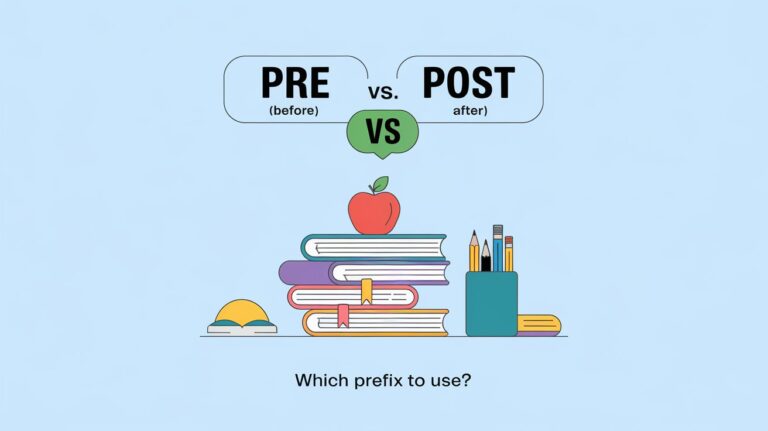Tying or Tieing? The Right Way to Spell It
When it comes to spelling, “Tying or Tieing” regularly motivate confusion, leaving many to marvel that it is the correct preference. Is it “tieing” or “tying”? Understanding the difference between these spellings is essential to ensure that your writing is correct and clear. In this guide, we’ll discover the right manner to spell these phrases, the confusion surrounding “tieing vs tying,” and clarify the precise usage for diverse contexts, which includes “tie-ing,” “tying in,” and greater. Let’s break it down and figure out as soon as and for all whether it’s “tying” or “tieing”.

“Tying” or “Tieing”: Which is Correct?
In case you’ve ever been perplexed by the way of whether or not to use “tying” or “tieing,” you’re now not on my own. Many humans warfare with the distinction among these two spellings, however in fact, one is virtually accurate. So, how do you spell tying? Is it “tieing” or “tying”? allow’s discover the important variations and remedy the confusion.
The Correct Spelling: “Tying”
The right spelling is “tying.” whilst it’d seem logical at first to apply “tieing” as it continues the base word intact, this isn’t the case. In English, verbs that result in “-ie” observe an awesome rule. while forming the existing participle (the “-ing” shape), the “-ie” adjustments to “-y” before adding “-ing.”
Here’s how it works:
- Tie becomes tying
- Die becomes dying
- Lie becomes lying
- Untie becomes untying
The “-ie” to “-y” shift helps avoid awkward letter combinations and makes the word easier to pronounce.
Tying vs. Tieing: What’s the Difference?
while you see “tieing” used, it’s wrong. The right shape is “tying.” The confusion probably arises due to the fact “tieing” looks like a logical extension of the bottom word, however it doesn’t align with standard spelling policies in English. So, whether you are discussing tying a knot, tying your shoes, or tying up free ends, usually use “tying” to make sure your writing is grammatically accurate.
Tie-ing or Tying In?
Some may marvel at the phrases tie-ing or tying in. The suitable form is tying in, not tieing in. This follows the equal rule: every time you want to shape the prevailing participle of a verb finishing in -ie, the “ie” adjustments to “y.” So, it is always tying in, now not tieing in.
Mnemonic to Remember
simple way to remember this is:
“Change -ie to -y, and you’ll never cry TYING is the way to comply!”
This catchy rhyme can help you recall the rule: when a verb ends in -ie, just change the “-ie” to “-y” and add “-ing.”A
Why is There Confusion?
The confusion between “tying” and “tieing” arises from how English handles verb endings, especially those that end in “-ie.” Typically, verbs that end in “-e” drop the “-e” and add “-ing” to form the present participle. For instance:
“Make” becomes “making”
“Talk” becomes “talking”
“Jump” becomes “jumping”
“Write” becomes “writing”
“Bake” becomes “baking”
“Run” becomes “running”
“Work” becomes “working”
“Laugh” becomes “laughing”
“Cry” becomes “crying”
“Read” becomes “reading”
In those instances, the verbs absolutely drop the final “-e” or follow general policies of transformation with none irregular modifications. However, verbs that lead to -ie, which includes “tie,” comply with a unique rule wherein the “ie” turns to “y” before adding “-ing,” main to “tying” instead of “tieing.”
⚡ Quick Recap
The precise spelling is “tying”, not “tieing.” This follows the rule that after verbs result in -ie, the “-ie” is replaced by way of “-y” earlier than including “-ing.” Other examples consist of “die” turning into “loss of life” and “lie” turning into “lying.” So, while you’re writing about securing something, “tying” is usually the manner to head.
What Does “Tying” Mean?
“Tying” is the existing participle of the verb “tie”, this means that to lock, bind, or relax something with a knot, string, rope, or other similar materials. it is able to additionally talk over adjoining or connecting matters together.
Here are some common uses of “tying”:
- Fastening Objects:
- She is tying her shoelaces.
- He was tying the rope to the tree.
- Creating a Knot:
- The sailor is tying a knot to secure the boat to the dock.
- Joining or Connecting:
- The ribbon was tying the bouquet of flowers together.
- They are tying the two pieces of fabric to create a scarf.
- In Competitions:
- The teams are tying in points after the first half of the game.
Words Following the -ie to -y Rule
| Base Word | Present Participle |
| Tie | Tying |
| Die | Dying |
| Lie | Lying |
| Vie | Vying |
| Untie | Untying |
| Belie | Belying |
| Spie | Spying |
| Apply | Applying |
| Rely | Relying |
| Deny | Denying |
Synonyms of “Tying”
The action of “tying” can be expressed in various ways depending on the situation. Here are some common alternatives:

- Binding – Securing or fastening something with the aid of tying it with a fabric like rope or string.
- Securing – Making something secure or constant in a region, often by fastening it.
- Fastening –Attaching or joining things together with a tie, clasp, or other means.
- Knotting – Tying something in a knot to hold it in place.
- Attaching –firmly securing something, typically with a tie or other fastener.
- Connecting – Joining two or more things together by tying or linking them.
- Linking – using a knot or tie to join or connect things in a way that looks like a chain.
- Strapping – Securing something with a strap or cord, usually by tying.
- Bundling – Grouping or tying items together into a bundle for storage or transport.
- Wrapping – Enclosing something with a material by tying or fastening it.
- Cordoning – Surrounding or enclosing an area, often using ropes or barriers tied together.
- Hitching – Attaching one object to another, such as tying a horse to a post or linking vehicles together.
Each of these words involves the idea of fastening, securing, or connecting something, often through the use of a tie or knot.
Sentences Using “Tying”
Here are some sentences using “tying”:
- She is tying her shoes before heading out for a run.
- He spent hours tying knots in the rope for the climbing trip.
- Tying the package with a ribbon made it look more elegant.
- The children are tying their bikes together to prevent them from being stolen.
- After tying the flag to the pole, they raised it for the ceremony.
- The dog was tying its leash around the tree while running in circles.
- I’m tying up all the loose ends before the project deadline.
- Tying the bag tightly ensured that nothing would spill out.
- He was tying a scarf around his neck to keep warm in the cold weather.
- They are tying the boat to the dock to keep it from drifting away.
These examples show how “tying” can be applied in different situations to represent the action of securing, joining, or attaching items.
Etymology of “Tying”
The word “tying” comes from the vintage English word “tiegan”, which means “to fasten” or “to bind.” It is related to the vintage Norse phrase “tægja”, which also approaches “to tie or fasten.” The phrase is derived from the Proto-Germanic root “tīgōną”, which has the meaning of binding or fastening.
Through the years, the verb advanced into middle English as “tien” or “tie” (encouraged by using antique French “tier”), before becoming the cutting-edge shape “tie” in middle English. The present participle form “tying” developed through the usual grammatical patterns, in which an -ing is brought to the verb to denote an ongoing action.
Consequently, “tying” has an extended record, rooted inside the concept of fastening or securing, and has remained steady in that means over centuries.
Master Tying a Tie: Windsor, Double Windsor & Arm Method
Windsor Knot
- Cross the wide end over the narrow end.
- Bring the wide end up through the neck loop.
- Pass the wide end down and cross it over again.
- Bring the wide end up through the loop again and pull it down through the front knot.
- Tighten and adjust the knot.
Double Windsor Knot
- Cross the wide end over the narrow end.
- Bring the wide end up through the neck loop.
- Pass it around behind and bring it up through the neck loop again.
- Bring it down over the front and through the knot you created.
- Tighten the knot for a symmetrical finish.
Tying a Tie on Your Arm
- Place the tie around your arm as you would around your neck.
- Follow the steps for either the Windsor or Double Windsor knot.
- Once the knot is formed, adjust it on your arm as you would on your neck.

Conclusion
The word “tying” originates from the Old English “tiegan,” meaning “to fasten” or “to bind.” Over time, it evolved into the modern verb “tie,” and the present participle “tying” is formed by adding -ing to the base verb. While it might seem logical to write “tieing”, this form doesn’t align with English spelling rules.
The confusion arises because verbs that end in -ie, like “tie,” follow a special rule. Instead of simply dropping the -e before adding -ing, the -ie changes to -y, resulting in “tying”. This rule applies to other verbs like “die” (becomes “dying”) and “lie” (becomes “lying”).
Understanding this rule ensures the correct spelling of “tying” and helps avoid the common mistake of using “tieing.” By following the -ie to -y rule, writers can maintain grammatical accuracy and avoid confusion in their writing.
If you want to explore whole site : Click Here
FAQS : Tying or Tieing? The Right Way to Spell It
What is the difference between tying and tieing?
The correct spelling is “tying,” not “tieing.”
When forming the present participle of “tie,” the silent “e” is dropped before adding “-ing” to follow standard English spelling rules.
Tying (✔️) – Correct
Example: She is tying her shoelaces.
Tieing (❌) – Incorrect
“Tieing” is rarely used and generally considered a spelling mistake.
So, the difference is that “tying” is the grammatically correct form, while “tieing” is incorrect in standard English.
How do you spell tying?
The correct spelling is “tying.”
When adding “-ing” to the verb “tie,” the silent “e” is dropped, forming “tying” instead of “tieing.”
✔️ Correct: tying
❌ Incorrect: tieing
Example: She is tying her shoelaces.
Which is the correct spelling: tying vs tieing?
The correct spelling is tying.
Can you spell “tying” for me?
Yes! The correct spelling is “tying.”
When adding “-ing” to the verb “tie,” the silent “e” is dropped, following standard English spelling rules.
✔️ Correct: tying
❌ Incorrect: tieing
Example sentence: She is tying her shoelaces.
What is the correct usage of tying in a sentence?
Here’s an example:
✔️ She is tying her shoelaces before the race.
Would you like me to optimize these FAQs further for SEO? 🚀
What are common mistakes when spelling tying?
People often mistakenly write “tieing” or “tie-ing”, but both are incorrect. The correct spelling is “tying.”
How do you write “tie-ing” properly?
There is no need to write “tie-ing” with a hyphen. The correct spelling is “tying.”
What is the spelling rule for tying?
The rule is simple: Drop the final “e” before adding “-ing” to a verb. Example:
Tie → Tying
Lie → Lying
Die → Dying
Is “tieing” ever correct?
No, “tieing” is generally considered incorrect in standard English. The correct spelling is “tying.”
What is the correct way to spell tie + ing?
The correct spelling is “tying.” You drop the “e” from “tie” before adding “-ing.”
Why is it “tying” instead of “tieing”?
English spelling rules state that when a verb ends in “-e”, you remove the “e” before adding “-ing” (e.g., make → making, write → writing). That’s why we spell it tying, not tieing.
Is it tieing or tying?
The correct spelling is “tying.” “Tieing” is a common mistake and is not used in standard English.
How do you spell tying?
The correct spelling is “tying.” When you add “-ing” to “tie,” you drop the silent “e”, forming tying, not tieing.
What is the difference between tying and tieing?
The correct spelling is “tying,” not “tieing.” In English, when adding “-ing” to a verb ending in “-e”, the “e” is usually dropped (e.g., tie → tying). “Tieing” is considered incorrect.















